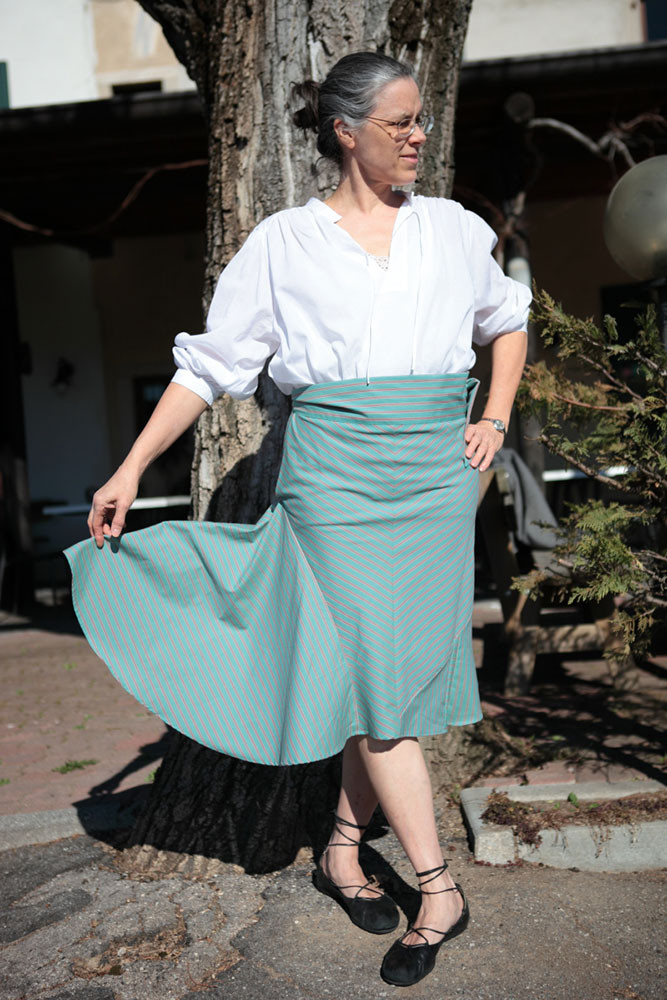Fashion is ever-evolving, and designers are constantly seeking fresh perspectives to elevate classic garments. The blouse, a wardrobe staple, offers endless opportunities for creative exploration, especially in back side fashion design. Moving beyond traditional front-focused aesthetics opens up a realm of unique and captivating styles.
One exciting avenue is incorporating zero-waste design principles into blouse creation. Inspired by historical garment making techniques and modern sustainable fashion movements, zero-waste design prioritizes maximizing fabric usage and minimizing textile waste. This approach often leads to unconventional pattern cutting and innovative garment structures, perfectly suited for creating striking back details.
Historically, maximizing fabric use was crucial. Examining garments like the Danish linen shirt reveals how simple shapes like rectangles and squares were ingeniously employed to construct entire garments with minimal waste. This historical approach can inspire contemporary blouse designs, particularly in crafting unique back features using geometric shapes and clever fabric manipulation.
The beauty of zero-waste fashion design lies in its ability to challenge conventional pattern making. Instead of starting with a preconceived shape and cutting fabric accordingly, the fabric itself becomes a starting point. Designers work within the constraints of the fabric width and shape, resulting in unexpected silhouettes and design elements. This approach is incredibly fruitful for Back Side Fashion Design Blouses, where the back can become a canvas for inventive pattern arrangements and fabric play.
Developing patterns for back side fashion design blouses can be an exciting process using software like Garment Designer. Starting with basic blouse measurements, designers can experiment with adding curves, flares, and unique shapes specifically to the back panel. The goal is to visualize how these elements will translate into the final garment and how they can create an eye-catching back detail.
Creating quarter-scale patterns is a helpful step in visualizing the overall design and ensuring pattern pieces fit together efficiently, especially in zero-waste projects. This method allows for experimentation with different layouts and stripe directions, crucial for achieving visually appealing and structurally sound back side fashion design blouses.
The layout of pattern pieces becomes a puzzle, particularly when aiming for zero waste. Each piece is carefully positioned to maximize fabric usage and create the desired shape. For back side fashion design blouses, this might involve strategically placing pieces to create openings, drapes, or asymmetrical details on the back.
The cut-offs, or leftover fabric pieces, in zero-waste design are minimized, but even small pieces can be incorporated creatively. For back side fashion design blouses, these remnants could be used to create embellishments, contrasting panels, or intricate detailing on the back, further enhancing the unique design.
Considering the position of pattern pieces in the finished garment is crucial. Understanding how each piece contributes to the overall silhouette and design is essential for achieving the desired look for back side fashion design blouses. This involves visualizing the drape, flow, and structure created by each pattern element.
Even seemingly functional elements like waistbands or belt wraps can become design features in back side fashion design blouses. Innovative closures, ties, or wraps can add visual interest and create unique back openings or adjustable silhouettes.
Exploring back side fashion design blouses through a zero-waste lens opens up a world of creative possibilities. By embracing unconventional pattern making, maximizing fabric use, and focusing on innovative details, designers can create truly unique and captivating garments that are both stylish and sustainable. The journey of zero-waste fashion design is a continuous exploration, encouraging designers to see patterns and design inspiration in unexpected places and to approach garment creation with a fresh and innovative perspective.

